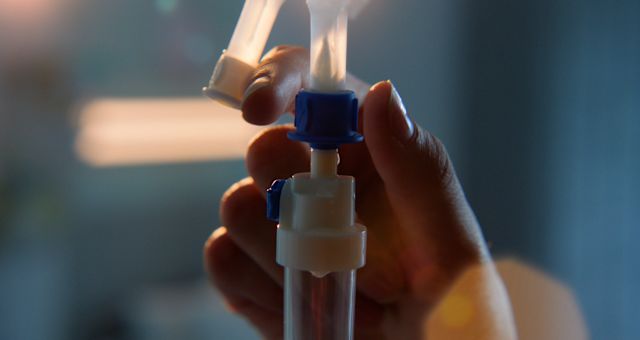Updated on September 23, 2024
Chronic inflammatory demyelinating polyneuropathy (CIDP) is a disorder that causes damage to the nervous system. More specifically, it causes damage to the myelin sheaths, the layers of proteins and fatty substances that cover and protect nerve fibers.
As the myelin sheath becomes damaged, the brain will have difficulty transmitting and receiving nerve signals with different parts of the body. A person with CIDP may experience problems with strength, reflexes, fine motor control, and balance, as well as tingling sensations and/or loss of feeling in the arms and legs. However, there are different variants of CIDP, and the condition can cause many different symptoms and affect many different parts of the body.
CIDP is a progressive disease. In most cases, symptoms slowly get worse over time. Other cases follow a relapsing-remitting course, where symptoms flare at times and go into remission at other times.
Treatment to control CIDP and prevent complications
While the exact causes of CIDP are not fully understood, it is known that the immune system plays a significant role. CIDP is believed to be an autoimmune disorder, a disease where the immune system attacks healthy tissues. Treatment for CIDP involves medications that modify or suppress immune system activity.
Current therapies cannot cure CIDP, but treatment can control the disease, prevent further damage to the nervous system, prevent progression, and prevent complications. With treatment, a significant number of people with CIDP experience remission, where the disease becomes inactive. (Though it is important to note that remission does not equal cured—there is always a chance of relapse, and ongoing care is essential).
The main medical treatments for CIDP are immunoglobulin therapy, plasma exchange, and corticosteroids.
Immunoglobulin therapy
Immunoglobulin therapy is one of the primary treatments for CIDP. Immunoglobulins are antibodies, proteins made by the immune system that help the body fight infections.
With immunoglobulin therapy, a person is given infusions of a solution that contains a high concentration of immunoglobulins, which are manufactured from blood and plasma donations. The infusion of immunoglobulin improves overall immune system functioning.
Immunoglobulin therapy is used as an induction therapy, which involves a high dose to get CIDP under control as quickly as possible. It is also used as maintenance therapy. Maintenance therapy occurs after induction therapy and involves smaller doses given every few weeks or months to keep the disease under control.
- If being used for induction therapy, intravenous immunoglobulin (IVIG) will be used. This is immunoglobulin that is delivered into the body through a needle inserted into a vein.
- For maintenance therapy, some people may switch to subcutaneous immunoglobulin (SCIG), which is delivered through a needle that is inserted just beneath the skin. SCIG can be self-administered, or administered at home by a caregiver, after training from a healthcare provider.
Plasma therapy
Along with immunoglobulin therapy, plasma therapy is one of the primary treatments for CIDP. Plasma therapy is effective, but less easily administered than immunoglobulin therapy.
Plasma therapy involves removing and processing blood from the person being treated for CIDP. The blood is circulated through a machine that filters out the plasma, which contains the unwanted antibodies. The machine then replaces the plasma with a plasma substitute. Then the red blood cells and plasma substitute are infused back into the body. This procedure is also known as plasmapheresis.
Corticosteroids
Corticosteroids are anti-inflammatory and immunosuppressive drugs. Corticosteroids may be used in circumstances where initial symptoms do not require a treatment that has a rapid response. Corticosteroids are also useful for treating relapses that occur during maintenance therapy with immunoglobulin therapy or plasma therapy. Corticosteroids are also easy to administer and cost-effective in many circumstances.
Because corticosteroids can have a significant risk of side effects with long-term use, a person may be treated with corticosteroids for induction therapy, before switching to other immunosuppressive medications for maintenance therapy.
Working with a healthcare provider
It is important to remember that there is no one-size-fits-all approach to treating CIDP. Treatment needs to be tailored to the person being treated, and a healthcare provider will be your best source of information about your diagnosis and treatment options.
In addition to medical therapy, it is also recommended that people with CIDP take an aggressive approach to physical and occupational therapy, working with providers who specialize in these areas of healthcare.



